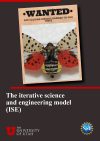Popularism and bumper sticker science should not stop us tackling sustainability through technology, argues Ingenuity Lab Director Carlo Montemagno
Ingenuity Lab is a unique organisation, designed and created to solve many of the grand challenges facing a modern world. Ingenuity Lab is a research organisation that focuses on the development and deployment of effective solutions to seemingly intractable challenges.
It works using a formal connect-and-develop process which involves building teams from members of government, industry, and academia. Central to this process is problem identification and the visualisation of the ideal solution. Often the identified problem is not the problem, but a symptom. Symptoms tend to be obvious, but quite often provide little insight into the most effective solution. With the recent intense discussion surrounding the newly imposed carbon tax in Canada, I think that it is time to extract ourselves from the emotion of the issue surrounding climate change, examine the impact of humanity on our environment, and identify the salient challenges needed to ensure global sustainability.
The unassailable fact is that the Earth’s climate is changing. But the Earth’s climate has been changing since its creation. The Earth’s atmosphere, governed by complex, non-linear physical processes is easily perturbed. Changes in solar radiation, volcanic activity, deforestation, construction of cities and roads, large-scale irrigation and, yes, the release of CO2 into the atmosphere, can all impact the Earth’s climate. The challenge is teasing out the climate variations caused by natural phenomena which we cannot manage from the impacts caused by anthropomorphic activities.
Firstly, we need to understand the impact of human activity versus natural processes on the climate. Then, isolate the impact of different human activities to further identify the effect that each activity has on the environment, especially when many of the activities occur simultaneously. For example, the change in albedo – the amount of solar energy absorbed/reflected – caused by the expansion of population centres is usually accompanied by an increase in CO2 emissions. Which of the two impacts is more important? Are their collective impacts additive or multiplicative? There are many questions yet unanswered. If we cannot clearly define and quantify the “cause”, how can we craft an effective solution?
Disagreeing with Malthus
The bottom line is that human activity has impacted the Earth’s environment since our society transitioned from hunter-gatherers. In 1798, Thomas Malthus postulated that humans were quickly going to exceed the carrying capacity of the Earth and that the positive population checks of starvation, disease, and war were necessary. He also dismissed the idea that technological advances in agriculture would provide the solution to the Earth’s resource limits. I hear echoes of Malthus in much of the dialogue surrounding climate change. While no one is proposing eugenic behaviour for addressing man’s impact on the environment, there is a distinct tenor in the dialogue that humankind must accept a lower quality of life and reduced opportunity for future generations. There is also the implied truth that the human race cannot address the challenges associated with man’s impact on the environment through advances in technology. I soundly reject both premises.
When I was growing up one of my favorite TV shows was Get Smart. I always waited for the moment in the show when Maxwell Smart would use his shoe phone. It was hilarious because most people perceived it as ridiculous. The concept of portable communication was outlandish. Nine years ago when Apple introduced the iPhone, it revolutionised global communication. In just 30 years, the technologies of science fiction fantasy transformed the way we engage in commerce, deliver healthcare, and interact as people. It effectively shrunk the world, making the Earth a single village where virtually every voice can be heard.
Popularism politics and bumper sticker science
Unfortunately, not every voice should be heard at the same volume. The cult of personality has enabled individuals without the requisite gravitas to seed popularism politics and bumper sticker science. By feeding personal prejudices, rational discussion has been kicked to the curb and has been replaced by intensely polarised emotion. Culturally, Canadians have an intense connection to the environment. I believe that it is fair to say that the wonder of nature is strongly woven into the fabric of Canadian society. This is why Canadians feel compelled to lead the charge against global warming and why Canada has acted to impose a significant tax on the use of carbon. The question that many are asking, both inside and outside of Canada is, is this an effective path for addressing the global warming challenge?
Canada is currently responsible for releasing approximately 1.6% of all of the global CO2 emissions. The European Union, China, India, Russia, Japan, and the United States are collectively responsible for releasing over 70% of the global CO2 emissions. It is doubtful that even a 50% reduction of Canadian CO2 emissions would have any material impact on global warming. To have any real effect on global warming, CO2 emission reductions must occur in concert with all six of the major emitters. Even with over 10 years of significant effort, it has not been possible to achieve a meaningful coordinated global response to CO2 emissions. Acting in isolation will only stress the Canadian economy and place an unnecessary burden on Canadians without achieving the desired goal of reducing man’s impact on global warming. There is a better path forward.
We must recognise that humankind has impacted and will continue to impact the Earth. It is our responsibility to access the Earth’s bounty in a sustainable way. Our ultimate goal should be to consume each of Earth’s resources within cyclic processes to maximise the utility of all of the resources that we harvest. The economic reusing of resources would ensure their continued availability for future generations. Achieving this vision can only be accomplished through technological innovation.
Examining the challenge of CO2 emissions you find opportunity. Let’s flip our perspective; instead of labeling CO2 as a waste product we should recognise it as a valuable raw material. Carbon is the foundation, the building block of all living organisms. At the very core of the global ecosystem, nature uses the Sun’s energy to assemble all living organisms from CO2. Visioning the solution to CO2 atmospheric emissions, suppose we can generically insert our industrial processes within the web of nature’s carbon cycle. We take the CO2 which would normally be emitted into the atmosphere, such as from an electrical power generating plant, and instead, using light, repurpose the CO2 into valuable products. Effectively we insert the carbon that would have been wasted and transform it into the fabric of our society. Ingenuity Lab is currently commercialising this new technology.
Using the power of N – inspiration from nature to guide the manipulation of matter using nanotechnology to build networks – Ingenuity Lab succeeded in replicating the natural process of carbon assembly and translated it into an industrial process. The process required learning how to convert light into the various chemical fuels of life and the ability to cheaply fabricate nano-compartmented systems to assemble an artificial metabolism that fixes and transforms CO2 into valuable products. While not the total solution to the global climate warming challenge, it does pull back the curtain to display the possible. It shows that the potential for technological achievement is boundless.
Advancing sustainability through technology
We must consider the past technological achievements of modern man as governments assess the optimum strategy for addressing global sustainability challenges. These achievements speak loudly about the human potential for creative innovation. Canada needs to occupy the position of a leading global steward of the environment, but must achieve it as a champion of sustainability through technology. It is the path forward.
Set the stage for a bright future for coming generations by embracing the potential of the possible, as well as understanding that technological achievement can drive market forces that lead to a more sustainable world. World leaders need to focus on providing an environment that supports the crafting of solutions to the global warming challenge and not at regulatory instruments as the primary weapon of choice. This strategy will accelerate economic and societal prosperity and has a much higher likelihood of long-term success. Canada, believe in the inventiveness and creativity of your citizenry. Provide the needed environment, and the people will deliver. The future belongs to the bold.
Carlo Montemagno, PhD
Director
Tel: 1 780 641 1617
Please note: this is a commercial profile


























